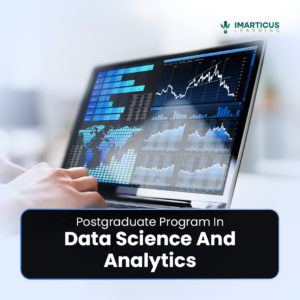What is Artificial Intelligence?
Also known as Machine Intelligence, Artificial Intelligence deals with the automation of machines so that they can perform human-like activities. Artificial Intelligence is being used in a lot of data-oriented industries such as insurance, healthcare, retail, technology, automotive, etc.
It also finds use in the finance sectors where various credit frauds and identity thefts need to be traced. Artificial Intelligence makes use of various machine learning algorithms to perform a specific set of tasks. Artificial Intelligence training is shaping our new world. It aims at achieving a specific goal by rationalizing the processes involved and then taking actions accordingly.
Who are AI-Researchers?
AI Researchers are those who apply the fundamentals of artificial intelligence to various data sets to draw out conclusions and various business insights. The job of AI Researchers includes language processing, algorithm building, development of data sorting mechanisms, etc. Also, it includes the movement and manipulation of data from various channels so that an efficient and effective transformation of data takes place with the utmost ease and efficiency.
AI researchers usually have a great understanding of various computer programming languages, hence making them proficient in what they do. Their expertise lies in building machines which reduces the human effort to a great extent. Artificial Intelligence researchers are in great demand owning it to the fast-paced technological environment and this ever-growing need for constant change. Thus, making AI Research a lucrative career path. People with less experience are also trying their hands in this area, given the financial attractiveness of this field.
How much do AI Researchers make?
Artificial Intelligence has become one of the most important elements of this data-oriented world. Companies are moving towards automation, making the best use of artificial intelligence and its ability to analyze, compile and assess huge data within a given time frame. The application of artificial intelligence requires expertise, thus demanding a pedestal in the corporate world. And this pedestal converts to a huge salary when converted into financial terms.
Artificial Intelligence is an area with a high demand for skilled personnel and less supply of the same, making it a really expensive affair for the companies looking forward to hiring AI Researchers and experts. The pay is the sweet spot for AI Researchers as the job role comes with huge money. The average salary for an AI Researcher in Silicon Valley is somewhere around $100,000 and $150,000 as it involves a lot of brainstorming and this pay is further increasing with the increase in applications of artificial intelligence.
Also, with increasing applications of Artificial Intelligence, the complexity of the operations is increasing, thus making the job of an AI Researcher a hotspot.
AI training and commands have such huge salaries as it provides a practical approach and puts the theoretical knowledge to some good use. Also, one can teach oneself and be ready for the market but understanding AI takes sufficient time and is not a cakewalk.
It is rapidly growing and the ones who are catching up with this growth are being rewarded in the form of really high salaries which keep them motivated to stay on the path as this growth graph of Artificial Intelligence is constantly going up and will not become flat anytime soon. As per Glassdoor, the average base pay of an AI Researcher is $111,118 per year which is pretty high when compared to other sectors of the economy.
Conclusion
Artificial Intelligence has made the world more dynamic than it was ever before. It is evolving at a very fast pace thus giving rise to a huge demand for AI professionals and the salary associated with the field is making it even more attractive for the generations to come.
We at Imarticus Learning offer Analytics and Artificial Intelligence courses at our centers in Mumbai, Thane, Pune, Bangalore, Chennai, Delhi, Gurgaon, Noida, Ahmedabad, and Jaipur.




